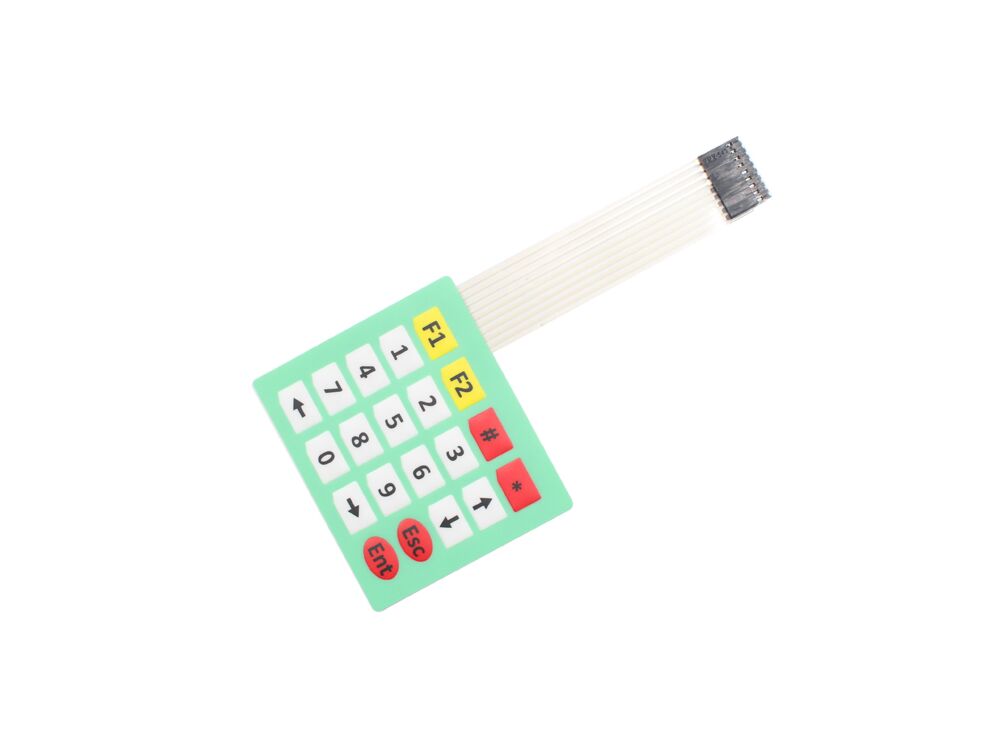Comprehending Membrane Layer Switches: The Trick to Trustworthy and durable Controls

What Are Membrane Layer Buttons?
Membrane layer switches are an advanced option in the world of interface technology, combining performance and layout flawlessly. These devices serve as a user interface in between customers and digital systems, incorporating several elements right into a small style. Commonly constructed from flexible, thin layers of products, membrane layer buttons are made to react to touch, enabling users to interact with machinery and electronic devices effectively.
The primary elements of a membrane layer button consist of a published circuit layer, visuals overlay, and a spacer layer that stops unexpected activation. The visuals overlay can be personalized to show brand identity or user choices, enhancing aesthetics while ensuring usability. Membrane layer buttons are frequently used in different applications, including medical tools, customer electronic devices, and industrial equipment, owing to their sturdiness and resistance to environmental elements such as moisture and dirt.
One of the essential advantages of membrane layer buttons is their capacity to hold up against wear and tear, making them ideal for high-traffic environments. Furthermore, they are lightweight and call for minimal area, enabling cutting-edge styles in product growth. In general, membrane switches over represent a sensible and effective choice for modern-day electronic user interfaces, marrying technology with user-centric style concepts.
Just How Membrane Switches Over Work
The procedure of membrane changes hinges on a simple yet efficient mechanism that equates user input into electronic signals. When a user presses the button, the leading layer flaws, enabling a conductive aspect in the circuit layer to make call with a matching conductive pad on the underside of the graphic overlay.
The design of membrane layer buttons can vary, however they often incorporate domes or tactile components to provide comments to the customer, enhancing the general experience - membrane switch. The products used in membrane buttons, such as polyester or polycarbonate, add to their toughness and resistance to ecological variables, consisting of moisture and dust. Moreover, the published circuits are generally encapsulated, which shields them from wear and tear with time.
Benefits of Membrane Switches

Additionally, membrane switches are understood for their durability. Constructed from robust products, they are immune to dirt, wetness, and physical wear, which dramatically extends their lifespan compared to traditional mechanical switches. This resilience makes them especially appropriate for high-traffic atmospheres and applications needing durability.
One more considerable benefit is the ease of cleaning and maintenance. The smooth surface area of membrane layer switches over decreases dirt build-up and is commonly invulnerable to spills, making them suitable for settings that require frequent sanitization.
Moreover, membrane layer buttons use a streamlined profile, leading to a thinner layout that can be incorporated into various tools without including bulk. This feature not just boosts the aesthetic appeal but additionally adds to a much more ergonomic product layout.
Applications of Membrane Switches
Easy to use and versatile, membrane layer buttons find applications across a large range of industries, consisting of clinical devices, customer electronics, and industrial tools. In the medical field, these buttons are indispensable to tools such as analysis devices, individual monitoring systems, over here and mixture pumps, where reliability and convenience of cleansing are critical. Their capacity to endure harsh atmospheres and maintain capability makes them optimal for such applications.

In consumer electronic devices, membrane layer switches are utilized in items like microwaves, washing makers, and remote controls - membrane switch. Their smooth layout allows for user-friendly customer interfaces, a knockout post enhancing the general customer experience while providing toughness and resistance to damage
Commercial tools also gains from membrane layer buttons, particularly in control panels for machinery and automation systems. These buttons supply protection against dirt and dampness, guaranteeing constant efficiency in tough environments. Their adjustable functions permit suppliers to tailor them to specific operational needs, enhancing efficiency and functionality.
Choosing the Right Membrane Switch
When selecting a membrane button, it is vital to consider numerous variables that affect efficiency and suitability for particular applications. The primary considerations consist of ecological problems, tactile feedback, durability, and design requirements.
First, analyze the operating atmosphere; switches exposed to dampness, chemicals, or severe temperatures require specific materials to make certain durability and performance. Next, review the demand for tactile feedback. Relying on individual interaction, some applications may benefit from a tactile response to validate activation, while others may choose a non-tactile design for aesthetic reasons.
Longevity is another essential variable; membrane layer switches should be created linked here to stand up to frequent usage, effects, and abrasion. Ensure the picked switch can sustain the expected lifecycle, specifically in high-usage situations.

Conclusion
To conclude, membrane switches over function as vital components in the layout of long lasting and reputable control systems throughout various sectors. Their small design, incorporated with robust building and construction and adjustable features, improves user communication while ensuring long life sought after settings. The flexibility of membrane layer switches permits tailored options that meet certain operational requirements, reinforcing their relevance in modern technology. As sectors continue to progress, the importance of integrating reliable membrane switch remedies can not be overstated.
Membrane layer switches represent a vital element of modern-day user interface layout, mixing functionality with resilience in various applications.Membrane switches are an advanced service in the realm of individual interface innovation, combining functionality and design perfectly. Usually built from versatile, thin layers of materials, membrane switches are made to respond to touch, allowing individuals to engage with equipment and electronic gadgets efficiently.
The design of membrane switches can differ, yet they usually include domes or responsive aspects to offer feedback to the user, boosting the total experience.In final thought, membrane switches offer as crucial parts in the style of dependable and durable control systems throughout numerous markets.
Comments on “The Role of Membrane Switches in Enhancing Device Functionality”